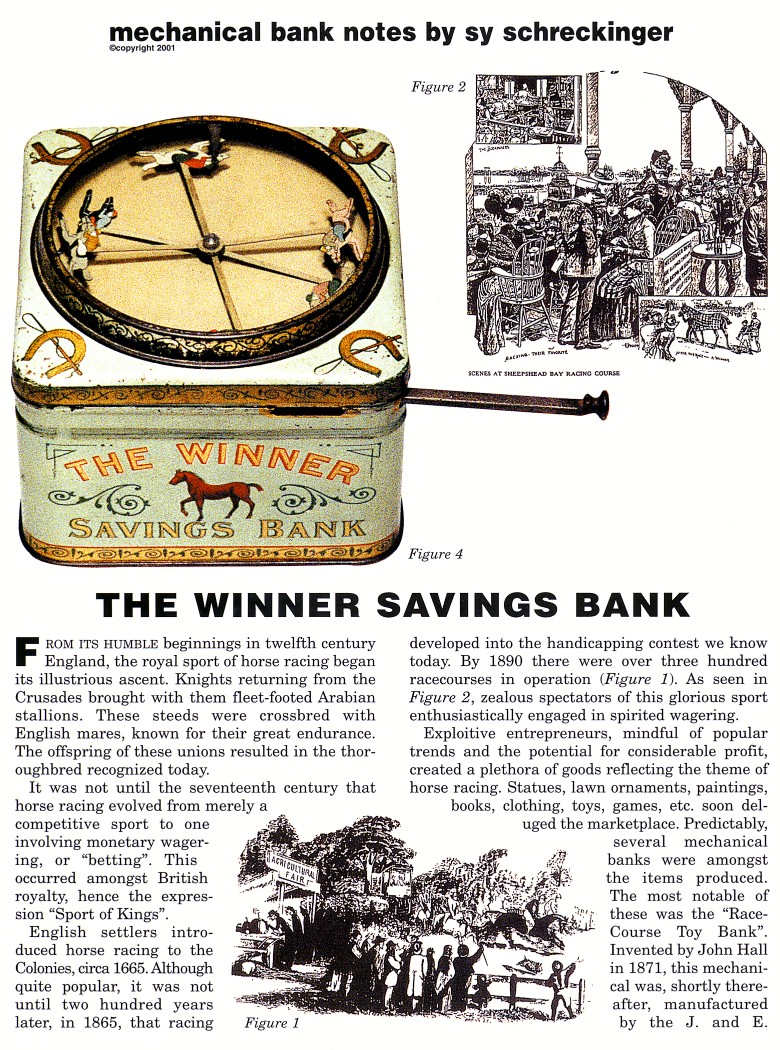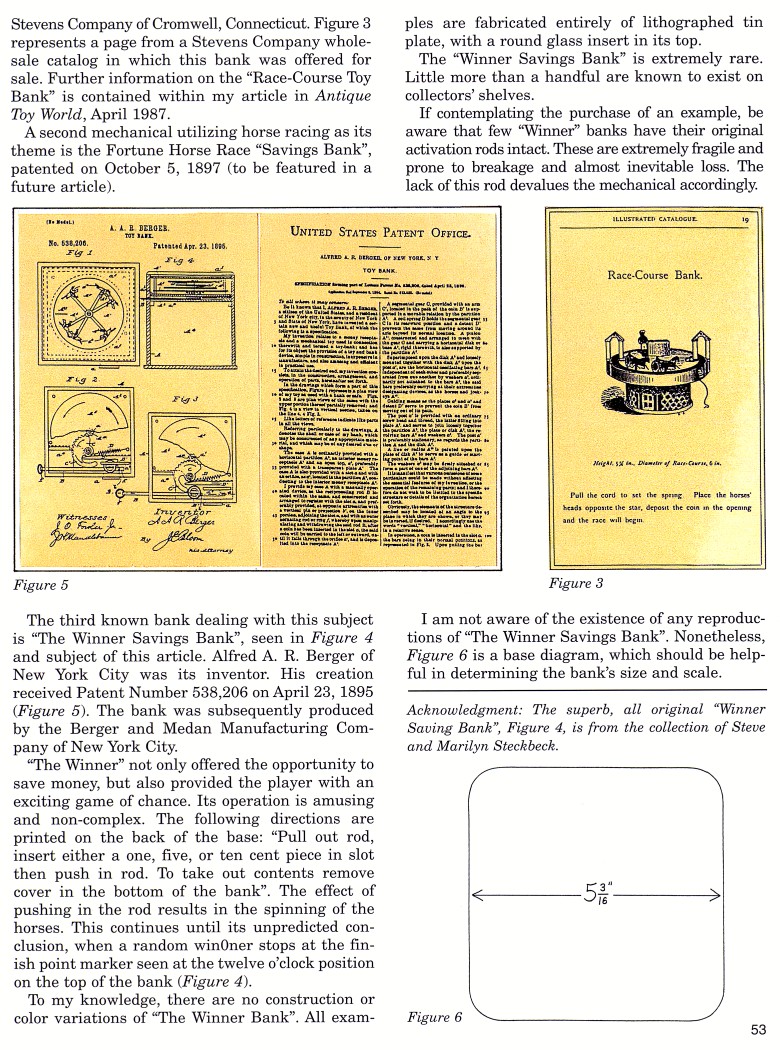|
The Winner Savings Bank
by Sy Schreckinger – ANTIQUE TOY WORLD Magazine – March, 2001
From its humble beginnings in twelfth century
England, the royal sport of horse racing began its illustrious ascent.
Knights returning from the Crusades brought with them fleet-footed Arabian
stallions. These steeds were crossbred with English mares, known for their
great endurance. The offspring of these unions resulted in the
thoroughbred recognized today.
It was not until the seventeenth century that horse racing evolved
from merely a competitive sport to one involving monetary wagering, or
"betting". This occurred amongst British royalty, hence the expression
"Sport of Kings".
English settlers introduced horse racing to the Colonies, circa 1665.
Although quite popular, it was not until two hundred years later, in 1865,
that racing developed into the handicapping contest we know today. By 1890
there were over three hundred racecourses in operation (Figure 1). As seen
in Figure 2, zealous spectators of this glorious sport enthusiastically
engaged in spirited wagering.
Exploitive entrepreneurs, mindful of popular trends and the potential
for considerable profit, created a plethora of goods reflecting the theme
of horse racing. Statues, lawn ornaments, paintings, books, clothing,
toys, games, etc. soon deluged the marketplace. Predictably, several
mechanical banks were amongst the items produced. The most notable of
these was the "Race-Course Toy Bank". Invented by John Hall in 1871, this
mechanical was, shortly thereafter, manufactured by the J. and E. Stevens
Company of Cromwell, Connecticut. Figure 3 represents a page from a
Stevens Company wholesale catalog in which this bank was offered for sale.
Further information on the "Race-Course Toy Bank" is contained within my
article in Antique Toy World,
April 1987.
A second mechanical utilizing horse racing as its theme
is the Fortune Horse Race "Savings Bank", patented on October 5, 1897 (to
be featured in a future article).
The third known bank dealing with this subject is "The Winner Savings
Bank", seen in Figure 4 and subject of this article. Alfred A. R. Berger
of New York City was its inventor. His creation received Patent Number
538,206 on April 23, 1895 (Figure 5). The bank was subsequently produced
by the Berger and Medan Manufacturing Company of New York City.
"The Winner" not only offered the opportunity to save money, but also
provided the player with an exciting game of chance. Its operation is
amusing and non-complex. The following directions are printed on the back
of the base: "Pull out rod, insert either a one, five, or ten cent piece
in slot then push in rod. To take out contents remove cover in the bottom
of the bank". The effect of pushing in the rod results in the spinning of
the horses. This continues until its unpredicted conclusion, when a random
winner stops at the finish point marker seen at the twelve o'clock
position on the top of the bank (Figure 4).
To my knowledge, there are no construction or color variations of
"The Winner Bank". All examples are fabricated entirely of lithographed
tin plate, with a round glass insert in its top.
The "Winner Savings Bank" is extremely rare. Little more than a
handful are known to exist on collectors' shelves.
If contemplating the purchase of an example, be aware that few
"Winner" banks have their original activation rods intact. These are
extremely fragile and prone to breakage and almost inevitable loss. The
lack of this rod devalues the mechanical accordingly.
I am not aware of the existence of any reproductions of "The Winner
Savings Bank". Nonetheless, Figure 6 is a base diagram, which should be
helpful in determining the bank's size and scale.
Acknowledgment: The superb, all original "Winner Saving Bank", Figure
4, is from the collection of Steve and Marilyn Steckbeck.
|


